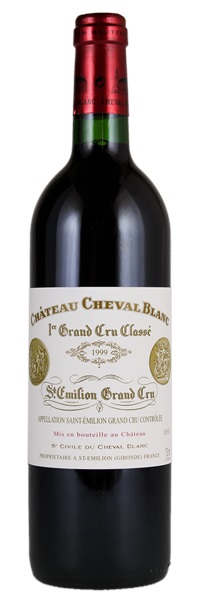
Image above is an example. To view the image of the lot, click the item number.
Estimate
...blockbuster bouquet of menthol, leather, black fruits, licorice, and mocha, the wine reveals medium body, extraordinary elegance, purity, and sweet, harmonious flavors with no hard edges. This is a seamless beauty...
Love the chocolate mousse and berry aromas here. This is opulent, yet reserved, and beautiful. Full-bodied, with velvety tannins and a delicious finish. Offering so much finesse and beauty, this is a polished and gorgeous Cheval.
Aromas of currant, bitter chocolate, violet, lead pencil and tobacco leaf...Fat, sweet and full, with smoke and currant flavors. Long on personality...
Spicy, vegy nose with great, top-quality density and balance. Pretty smart without being too concentrated or sweet. Very fresh and vibrant. Good wine!